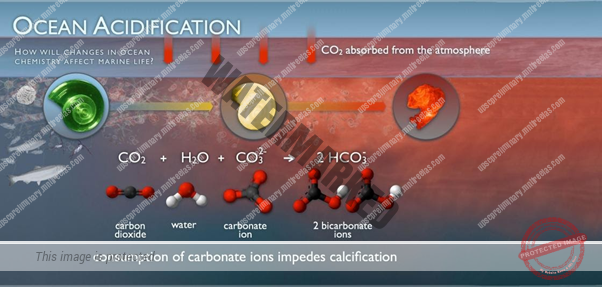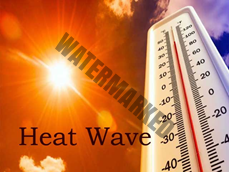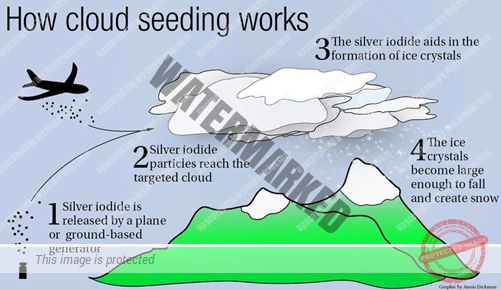- INTERNATIONAL EFFECTS: VIENNA CONVENTION, 1985
- OCEAN ACIDIFICATION
- GLOBAL SEA LEVEL RISE
- HEAT WAVES
- TECHNOLOGICAL MITIGATION STRATEGIES FOR CLIMATE CHANGE
- TECHNOLOGIES TO MITIGATE CLIMATE CHANGE
UNIT 5 – CLIMATE CHANGE – PART 2
International efforts:
Vienna Convention, 1985:
Vienna Convention was the outcome of efforts of twenty countries who were largely responsible for producing Chlorofluorocarbons (CFC). These countries signed a treaty in Vienna which is known as Vienna Convention for the Protection of the Ozone Layer, 1985. Vienna Convention is a framework treaty which sets out the general obligation of the parties. Vienna Convention entered into force on 22nd September 1988. Vienna Convention is the first international treaty to have achieved universal ratification.
Montreal Protocol, 1987:
The Montreal Protocol on Substances that Deplete the Ozone Layer is a supplementary agreement to Vienna Convention, 1985. The aim of the Protocol is to eliminate and phase out Ozone Depleting Substances (ODS) in a time bound manner since these ODS were damaging the important protection in the form of Ozone layer
Kigali Amendment, 2016
The Kigali Amendment aims for the phase-down of hydrofluorocarbons (HFCs) by cutting their production and consumption.
Ocean acidification:
In the 200-plus years since the industrial revolution began, the concentration of carbon dioxide (CO2) in the atmosphere has increased due to humans burning fossil fuels (such as car emissions) and changing the way land is used (such as deforestation).
During this time, the pH of surface ocean waters has fallen by 0.1 pH units. The pH scale, like the Richter scale, is logarithmic, so this change represents approximately a 30 percent increase in acidity.
Future predictions indicate that the oceans will continue to absorb carbon dioxide, further increasing ocean acidity. Estimates of future carbon dioxide levels, based on business-as-usual emission scenarios, indicate that by the end of this century the surface waters of the ocean could have acidity levels nearly 150 percent higher, resulting in a pH that the oceans haven’t experienced for more than 20 million years.
The ocean absorbs about 30% of the CO2 that is released in the atmosphere, and as levels of atmospheric CO2 increase, so do the levels in the ocean.
When CO2 is absorbed by seawater, a series of chemical reactions occur resulting in the increased concentration of hydrogen ions. This increase causes the seawater to become more acidic and causes carbonate ions to be relatively less abundant.
Carbonate ions are an important building block of structures such as seashells and coral skeletons. Decreases in carbonate ions can make building and maintaining shells and other calcium carbonate structures difficult for calcifying organisms such as oysters, clams, sea urchins, shallow water corals, deep sea corals, and calcareous plankton.
Many marine organisms that produce calcium carbonate shells or skeletons are negatively impacted by increasing CO2 levels and decreasing pH in seawater.
GLOBAL SEA LEVEL RISE:
Global mean sea level has risen about 8–9 inches (21–24 centimeters) since 1880, with about a third of that coming in just the last two and a half decades. The rising water level is mostly due to a combination of meltwater from glaciers and ice sheets and thermal expansion of seawater as it warms.
In 2018, global mean sea level was 3.2 inches (8.1 centimeters) above the 1993 average—the highest annual average in the satellite record (1993-present)
5.6.1 Why Sea level matters?
In world level most of the population lives in relatively high population-density coastal areas and in India also major population density are along the coastal areas and it has also good amount of fertile alluvium tract, where sea level plays a role in flooding, shoreline erosion, and hazards from storms.
5.6.2 What’s causing sea level to rise?
Global warming is causing global mean sea level to rise in two ways. First, glaciers and ice sheets worldwide are melting and adding water to the ocean. Second, the volume of the ocean is expanding as the water warms. A third, much smaller contributor to sea level rise is a decline in the amount of liquid water on land—aquifers, lakes and reservoirs, rivers, soil moisture. This shift of liquid water from land to ocean is largely due to groundwater pumping.
HEAT WAVES:
|
The Indian Meteorological Department (IMD) has given the following criteria for Heat Waves:
- Heat Wave need not be considered till maximum temperature of a station reaches atleast 40*C for Plains and atleast 30*C for Hilly regions
. Based on Departure from Normal
- Heat Wave: Departure from normal is 4.5°C to 6.4°C
- Severe Heat Wave: Departure from normal is >6.4°C
Based on Actual Maximum Temperature (for plains only)
- Heat Wave: When actual maximum temperature ≥ 45°C
- Severe Heat Wave: When actual maximum temperature ≥47°C
How are heat waves formed?
A heat wave is formed when static high pressure generated in the upper atmosphere over a region for several days up to several weeks. This static high pressure generates a hot mass of air, which is stagnant for many days and week, which resulted the trapping of more heat that also reduce the convention currents. The high-pressure acts as a barrier and forces the mass of air to sink to the surface of the land that prevents heat to rise.
This hot mass of air accumulates only heat and humidity without any trace of precipitation that causes abnormally high temperatures Heat wave occurs mostly over an interior plain area when dry and warmer air is transported in a region with clear skies and hence maximum insulation during the summer season. Bay islands, Lakshadweep, Tamil Nadu, Kerala, Coastal and South Interior Karnataka are not affected by heat waves due to the occurrence of maritime air over these regions.
Heat waves generally develop over Northwest India and spread gradually eastwards & southwards but not westwards (since the prevailing winds during the season are westerly to northwesterly).
Most severe impact of heat is felt on water resources that evaporate fast during heat wave conditions. This, thereby, increases the vulnerability of humans, natural habitat and economic activities including agriculture (crops and livestock).
Heat health impacts are more severe in urban areas where residents are exposed to higher and nocturnally sustained temperatures compared to surrounding areas due to a phenomenon called the Urban Heat Island (UHI) effect which is caused by a combination of more heat absorbing surfaces AHMEDABAD WAS THE FIRST CITY TO PREPARE A HEAT WAVE ACTION PLAN IN 2015
Health Impacts of Heat Waves
HEAT SYNCOPE | Giddiness vertigo sudden drowsiness /unconsciousness |
HEAT CRAMPS | Edema (swelling) and Syncope (Fainting) generally accompanied by fever below 39*C i.e.,102*F |
HEAT EXHAUSTION | Fatigue, weakness, dizziness, headache, nausea, vomiting, muscle cramps and sweating |
HEAT STROKE | Body temperatures of 40*C i.e., 104*F or more along with delirium, seizures, or coma |
Technological mitigation strategies for climate change.
The 2018 Intergovernmental Panel on Climate Change (IPCC) Special Report on 1.5 Degrees of Warming highlights the urgency of the needed climate actions: global emissions will need to peak by 2030 and rapidly decrease to net-zero by 2050.
Therefore, the world communities are focusing broadly on two main areas: mitigation and adaptation.
Mitigation – reducing climate change – involves reducing the flow of heat-trapping greenhouse gases into the atmosphere, either by reducing sources of these gases (for example, the burning of fossil fuels for electricity, heat or transport) or enhancing the “sinks” that accumulate and store these gases (such as the oceans, forests and soil).
AS PER THE REPORT Mitigation of Climate Change from the United Nations Intergovernmental Panel on Climate Change, the goal of mitigation is to avoid significant human interference with the climate system, and “stabilize greenhouse gas levels in a timeframe sufficient to allow ecosystems to adapt naturally to climate change, ensure that food production is not threatened and to enable economic development to proceed in a sustainable manner”
Adaptation – adapting to life in a changing climate – involves adjusting to actual or expected future climate. The goal is to reduce our vulnerability to the harmful effects of climate change (like sea-level encroachment, more intense extreme weather events or food insecurity).
It also encompasses making the most of any potential beneficial opportunities associated with climate change (for example, longer growing seasons or increased yields in some regions).
Technologies to mitigate climate change
Global climate is controlled by the amount of solar radiation received by Earth and also by this energy within the Earth system—that is, how much is absorbed by Earth’s surface and how much is reflected or reradiated back into space. The reflectance of solar radiation is controlled by several mechanisms, including Earth’s surface albedo and cloud coverage and the presence in the atmosphere of greenhouse gases such as carbon dioxide (CO2). There are various geoengineering proposals which will aim at regulating this heat balance of the earth and employ various other carbon sequestration techniques to mitigate climate change.
Approaches: Two fundamentally different approaches to the problem of global climate change have arisen.
- The first approach proposes the use of technologies that would increase the reflectance of incoming solar radiation, thus reducing the heating effect of sunlight upon Earth’s surface and lower atmosphere. However, altering Earth’s heat budget by reflecting more sunlight back into space might offset rising temperatures but would do nothing to counter the rising concentration of CO2in Earth’s atmosphere.
- The second geoengineering approach focuses on this problem, proposing to remove CO2from the air and store it in areas where it cannot interact with Earth’s atmosphere. This approach is more appealing than the first because it has the potential to counteract both rising temperatures and rising carbon dioxide levels.
- Cloud seeding
This process attempts to bring rain to parched lands by dispersing particles of silver iodide or solid carbon dioxide into rain-bearing cloud freezing, calcium chlo
|
This process attempts to bring rain to parched lands by dispersing particles of silver iodide or solid carbon dioxide into rain-bearing clouds.
In clouds at temperatures above freezing, calcium chloride particles provide the condensation nuclei around which raindrops form. Attempts have been made to use these substances in cloud seeding operations that minimize damage to crops and buildings from hailstones.
Cloud seeding works on a regional scale, seeking to influence weather systems for the benefit of agriculture.
- Stratospheric Sulphur injection: The formation of an aerosol layer of sulfur in the stratosphere would increase the scattering of incoming solar radiation. As more radiation is scattered in the stratosphere by aerosols, less would be absorbed by the troposphere, the lower level of the atmosphere where weather primarily occurs. Proponents believe that sulfur injection essentially would mimic the atmospheric effects that follow volcanic eruptions.
This aerosol layer was reported to have lowered average temperatures around the world by about 0.5 °C (0.9 °F) over the following few years. To produce an artificial aerosol layer, sulfur particles would be shot into the stratosphere by cannons or dispersed from balloons or other aircraft.
- Cloud whitening
The process of cloud whitening relies upon towering spraying devices placed on land and mounted on oceangoing vessels. Such devices would expel a mist of pressurized seawater droplets and dissolved salts to altitudes up to 300 meters (1,000 feet). As the water droplets evaporate, proponents believe, bright salt crystals would remain to reflect incoming solar radiation. Later these crystals would act as condensation nuclei and form new water droplets, which in turn would increase overall marine cloud coverage, reflecting even more incoming solar radiation into space.
Orbital mirrors and sunshades
This proposal involves the placement of several million small reflective objects beyond Earth’s atmosphere. It is thought that concentrated clusters of these objects could partially redirect or block incoming solar radiation. The objects would be launched from rockets and positioned at a stable Lagrangian point between the Sun and Earth.
|
Carbon capture and storage
The carbon-removal approach would extract CO2 from other gases in the atmosphere by changing it into other forms of carbon (such as carbonate) through photosynthesis or artificial “scrubbing.”
This separated carbon then would be either sequestered in biomass at the surface or transported away for storage in the ocean or underground. These include
- Carbon burial
It involves the pumping of pressurized CO2 into suitable geological structures (that is, with gas-tight upper layers to cap the buried carbon) deep underground or in the deep ocean.
- Ocean fertilization
Ocean fertilization would increase the uptake of CO2 from the air by phytoplankton, microscopic plants that reside at or near the surface of the ocean.
- Biochar production
The production of biochar, a type of charcoal made from animal wastes and plant residues (such as wood chips, leaves, and husks), can sequester carbon by circumventing the normal decomposition process or acting as a fertilizer to enhance the sequestration rate of growing biomass.
Biochar mixed with soils might serve as a fertilizer, thus further increasing the carbon sequestration potential of plants growing in the soil.
Another form of carbon capture would involve the use of scrubbing towers and so-called artificial trees.



